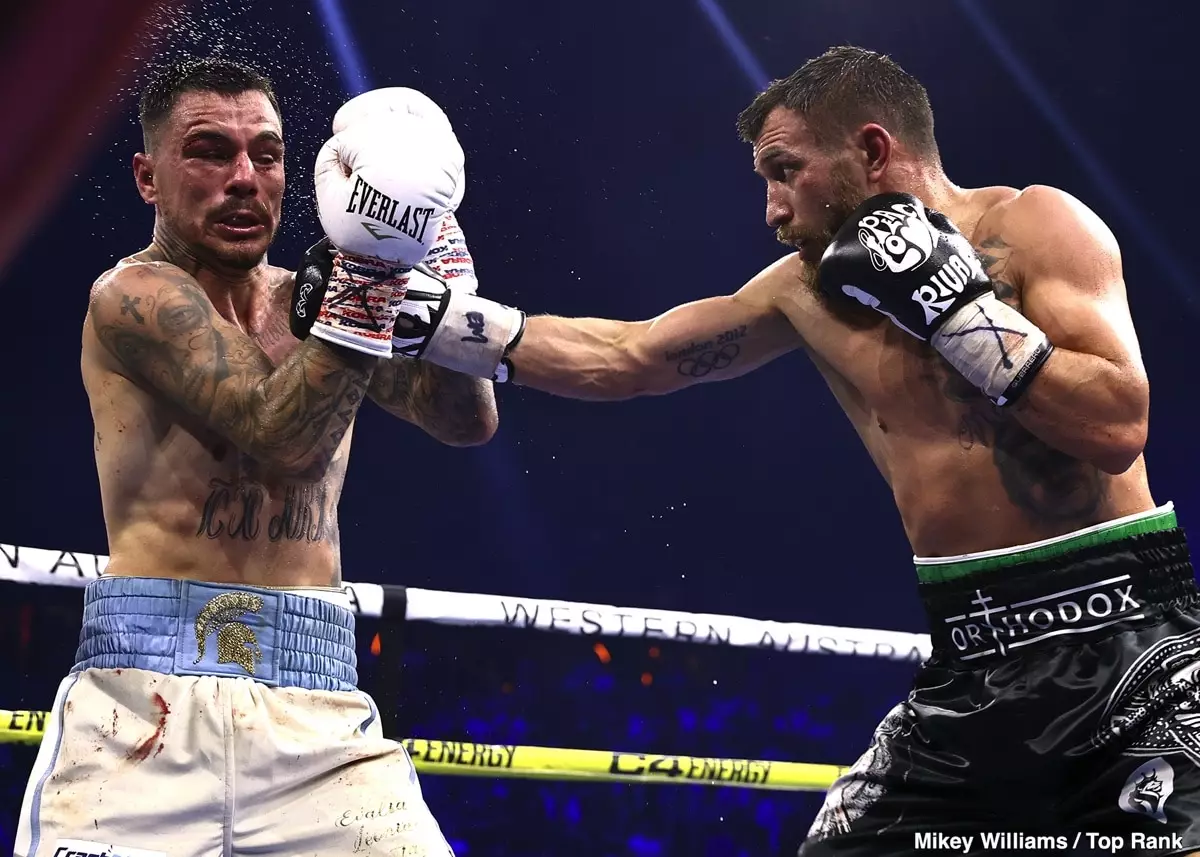In the world of professional boxing, the dynamics of matchmaking are ever-evolving, and the latest developments surrounding Gervonta “Tank” Davis exemplify this reality. With discussions reportedly underway between Davis’ team and Top Rank regarding a potential clash with IBF lightweight champion Vasiliy Lomachenko, the situation raises crucial questions about strategy, confidence, and the financial implications of such a fight in the current landscape.
The Landscape of Potential Matchups
Gervonta Davis, an undefeated fighter with a record of 30 wins, 0 losses, and 1 draw, including 28 knockouts, is known for his explosive fighting style and knockout power. However, despite his accomplishments in the ring, his recent performance against Lamont Roach has sparked debate regarding his next steps. The majority draw result from their recent bout has left many wondering about the legitimacy of Davis’ standing in the lightweight division. A rematch with Roach, which Davis is pushing for in May, is not only a potential opportunity to settle the score but also a chance to reaffirm his dominance.
Considering the financial landscape, a rematch with Roach or a showdown with rising star Shakur Stevenson offers more lucrative options than a bout with Lomachenko, who has experienced a significant hiatus from the ring. Fighters and their teams must always weigh the risks and rewards, and the general consensus suggests that Lomachenko, largely forgotten in the wake of inactivity, doesn’t carry the same commercial weight as these other opponents. The challenge for Davis is clear: should he capitalize on opportunities that promise financial gain, or does he seek to unify titles, thereby enhancing his legacy at the risk of the paycheck?
Vasily Lomachenko, a decorated champion with a storied career, has not fought since May 2022, which raises questions regarding his condition and readiness to compete. At 37, Lomachenko’s age and his previous injuries cast a shadow over his potential to re-enter the ring against a fighter as formidable as Davis. The previous avoidance of a matchup between Lomachenko and Davis in their primes, when both athletes were at their peak, lingers in discussions. This history suggests a degree of opportunism on the part of Team Davis—targeting Lomachenko now when he appears more vulnerable than ever.
However, the perception of such a fight could easily backfire. Lomachenko’s inactivity may not only diminish his appeal but could also trigger skepticism among fans and analysts alike, who might perceive the matchup as a tactical avoidance of fresher, more dangerous adversaries like Stevenson. Alternatively, Davis may view a potential fight with Lomachenko as a pathway to achieving unification in the lightweight division, a significant accomplishment for any fighter seeking to solidify their legacy.
Public perception plays a crucial role in the world of sports, especially in high-stakes combat sports like boxing. In the aftermath of the draw with Roach, some critics have raised doubts about Davis’ readiness for elite competition, fueling speculation regarding his willingness to engage in more challenging matchups. The shift in focus toward Lomachenko could be interpreted as a lack of faith in Davis’ ability to thrive against top-tier fighters, thus sparking conversation around the idea of complacency within the Davis camp.
On the other hand, Davis has made headlines by expressing interest in a crossover fight with social media sensation Jake Paul, which highlights another layer of complexity in his career. While the allure of financial success is tempting, Davis must grapple with the narrative that these choices may create. A fight against Paul could hinder his credibility within the boxing community, whereas striving for legitimate challenges in the ring, such as a rematch with Roach or a bout against Stevenson, could solidify his reputation as a serious contender.
As Gervonta Davis navigates this pivotal crossroads in his boxing career, the decisions he makes will reverberate throughout the sport. The uncertainty surrounding potential adversaries, combined with the complexity of public perception, creates a volatile but exciting environment. Whether he opts for a lucrative rematch with Roach or embarks on the path of unification against a transitioning Lomachenko, one thing remains clear: the eyes of the boxing world are firmly fixed on Tank Davis, eager to see how he shapes the next chapter of his legacy.

